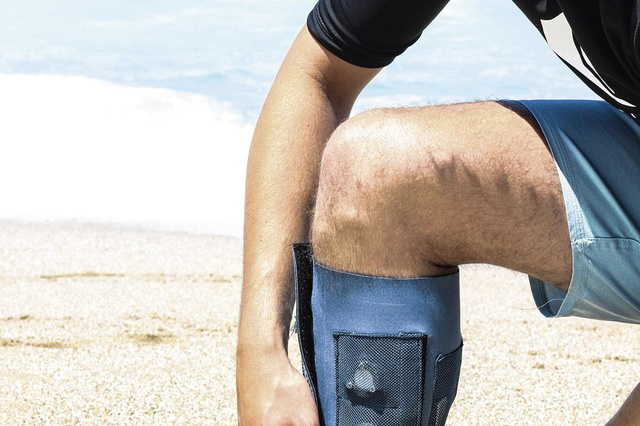
Surfing for science – LeVif / L’Express on PC
In the Biarritz area, surfers now wear an amazing device around the calf. Since this summer, science has been on their plate with Project Curl. Objective: To collect data on chemical pollution of marine waters. Because if bacterial contamination is often controlled, especially in the controlled and polluted areas with the famous Blue Flag, along with chemical contamination, then this is a big mystery.
…
In the Biarritz area, surfers now wear an amazing device around the calf. Since this summer, science has been on their plate with Project Curl. Objective: To collect data on chemical pollution of marine waters. Because if bacterial contamination is often controlled, especially in the controlled and polluted areas with the famous Blue Flag, along with chemical contamination, then this is a big mystery. “In the European regulatory framework for bathing water, there is nothing obligating member states to monitor the chemical quality of the water,” stresses Marc Valmsoni, of Surfrider Foundation Europe, an association of surfers involved in ocean conservation. As a result, when he launched a volunteer network study in 2020, 98% of participants expressed concern about potential chemical contamination they were exposed to while surfing. “I spoke with an environmental toxicologist from Ifremer, a marine biology research and monitoring organization, and we figured it would be interesting to provide surfers with passive sensors.” These sensors detect fine organic pollutants (pesticides, hydrocarbons, medicinal substances, cosmetics, etc.) and fine metal pollutants (cadmium, mercury, etc.). “To collect the data, it takes roughly the equivalent of four days of immersion, or about a hundred hours. That’s between fifty and a hundred browsing sessions per year.” Surfriders Europe volunteers take turns submerging the sensors, and groups of swimmers and divers (in Marseille streams) are also given to determine, among other things, whether exposure to pollutants varies according to practice. Data from this first phase will soon be analyzed by Ifremer as well as UMR Epoc, a research unit, in Bordeaux. Second, it will be necessary to identify the health risks associated with exposure to the specific substances. “We want to expand the project on a European scale, introducing Marc Valmsoni. From next year, we plan to do this in Spain, and possibly in the Netherlands where we have a very involved staff office. As much as possible, replicate this across our network.” The association is present in twelve countries in Europe, including Belgium, and provides its members with the opportunity to participate in many environmental activities and campaigns.

“Organizer. Social media geek. General communicator. Bacon scholar. Proud pop culture trailblazer.”
